Moray is a fascinating archaeological site located in the Sacred Valley of the Incas, near Cusco, Peru. It is characterized by its impressive circular terraces, believed to have been used by the Incas as an agricultural experimentation center. Here is a detailed guide to Moray:
Summary
Moray

Moray was discovered in the 20th century and has been the subject of multiple archaeological studies. It is believed that the Incas used this site to test crops in different microclimates, thanks to the temperature variation between the terrace levels.
Location and Geographic Area
Moray is located approximately 50 km from Cusco, in the Urubamba province. It is situated 3,500 meters above sea level, surrounded by mountains, and enjoys a temperate, dry climate.
How to Get to Moray
There are several ways to get to Moray:
– From Cusco: You can take private transportation or an organized tour.
– From Maras: Accessible via a dirt road from the village of Maras, about 7 km from Moray.
Who Carries It Out and How They Do It

Archaeological studies at Moray have been carried out by Peruvian and international researchers. Excavation techniques and soil analysis have been used to understand its function as an agricultural laboratory.
Latest Research
Recent research has confirmed that Moray had an advanced irrigation system and that each level of the terraces had a different temperature, allowing for the adaptation of crops from different regions.
Tips for Visiting Moray
– Wear comfortable, warm clothing, as temperatures can vary.
– Wear sunscreen and a hat, especially during the dry season.
– Hire a guide for detailed information about the history and function of the site.
Characteristics of the Nearby Population
Communities near Moray, such as Misminay and Kaccllarakay, maintain ancestral traditions and are primarily dedicated to agriculture and tourism.
Tourism in Moray
Moray is a popular tourist destination, especially for those seeking to learn more about Inca agricultural engineering. Guided tours and photography tours are available.
Cultural Activities, Flora, and Fauna
– Cultural activities: Local festivals and Andean rituals.
– Flora: Native plants such as ichu and queuña.
– Fauna: Andean birds and small mammals.
Detailed Itinerary
Here is a suggested itinerary for a visit to Moray:
Morning
– 7:00 AM: Departure from Cusco.
– 8:30 AM: Arrival in Maras and brief tour of the town.
– 9:00 AM: Arrival in Moray and exploration of the circular terraces.
– 10:30 AM: Explanation of the Inca agricultural system.
– 11:30 AM: Hike in the surrounding area and observe flora and fauna.
Afternoon
– 12:30 PM: Lunch at a local restaurant.
– 2:00 PM: Visit to the Maras Salt Mines.
– 3:30 PM: Return to Cusco.
– 5:00 PM: Arrival in Cusco.
Moray is a unique archaeological site that offers fascinating insight into Inca agricultural engineering.
Maras

Maras is a Peruvian town located in the Sacred Valley of the Incas, in the Urubamba province of Cusco. It is famous for its impressive salt mines, which have been exploited since pre-Inca times. Here is a detailed guide to Maras:
Discovery of Maras
Maras has been inhabited since pre-Hispanic times, but its importance grew during the colonial era when it became a center of salt production. It was officially founded as the Villa de San Francisco de Asís in 1556.
Location and Geographic Area
Maras is located 3,300 meters above sea level, approximately 40 km northwest of Cusco. Its climate varies seasonally: during the rainy season (October to March), temperatures range between 7°C and 20°C, while during the dry season (April to September), temperatures can drop to 1°C at night.
How to Get to Maras
There are several ways to get to Maras:
– From Cusco: You can take private transportation or an organized tour.
– From Urubamba: You can get there by taxi or bus.
– From Chinchero: There is a paved road that connects Cusco with Urubamba, passing through Maras.
Who Works and How They Do It
Archaeological research and studies on Maras have been carried out by experts in history and archaeology. The salt production techniques and the town’s colonial architecture have been analyzed.
Latest Research
Recent research has revealed that the Maras Salt Mines have been used since pre-Inca times and that their production system remains similar to that of centuries ago.
Tips for Visiting Maras
– Wear comfortable and warm clothing, especially during the dry season.
– Wear sunscreen and a hat, as the sun can be intense.
– Hire a guide for detailed information about the site’s history and function.
Characteristics of the Nearby Population
The inhabitants of Maras preserve many ancestral traditions and are primarily dedicated to agriculture and salt production. Their traditional clothing is colorful, with long skirts and woolen ponchos.
Tourism in Maras
Maras is a popular tourist destination, especially for its salt mines and its proximity to Moray. Guided tours and photography tours are available.
Cultural Activities, Flora, and Fauna
– Cultural activities: Local festivals such as the Feast of Saint Francis of Assisi in October.
– Flora: Native plants such as ichu and queuña.
– Fauna: Andean birds and small mammals.
Detailed itinerary

for an ATV tour through Maras and Moray, an adventurous experience in the Sacred Valley of the Incas:
Maras and Moray ATV Tour Itinerary
– Duration: Approximately 6 hours
– Physical level: Moderate
– Departure: Daily
Morning
– 7:00 AM: Pickup from your hotel in Cusco.
– 8:00 AM: Arrive in Cruzpata, where you will receive a brief instruction on ATV operation.
– 8:30 AM: Start of the ATV tour to Moray.
– 9:15 AM: Arrive in Moray, where you will explore the Inca agricultural terraces and learn about their role as an agricultural laboratory.
– 10:00 AM: Return by ATV to Cruzpata.
Afternoon
– 10:30 AM: Transfer by vehicle to the Maras Salt Mines.
– 11:00 AM: Guided tour of the salt mines, where you will learn about the traditional salt extraction process.
– 12:00 PM: Return to Cusco by private transportation.
– 1:00 PM: Arrival in Cusco.





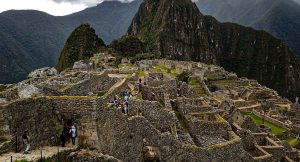
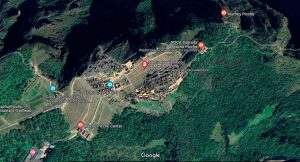
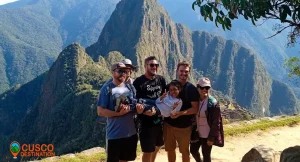
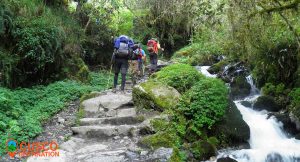
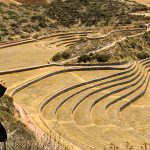
Leave A Reply